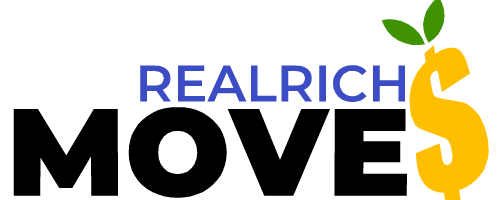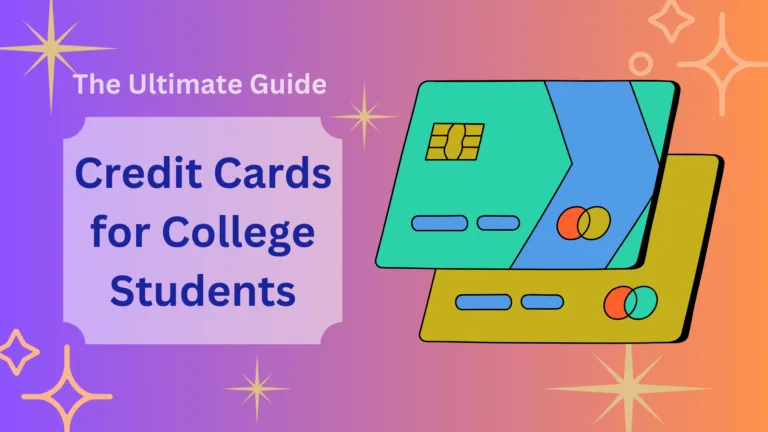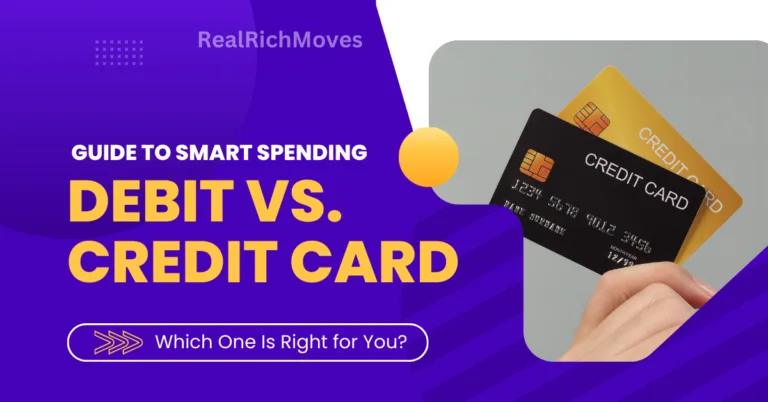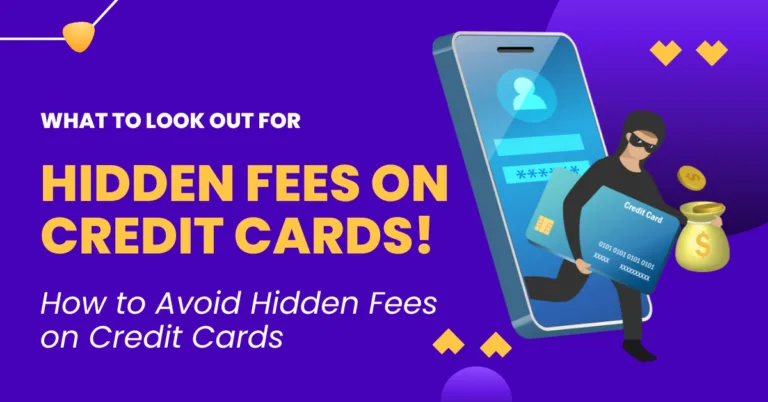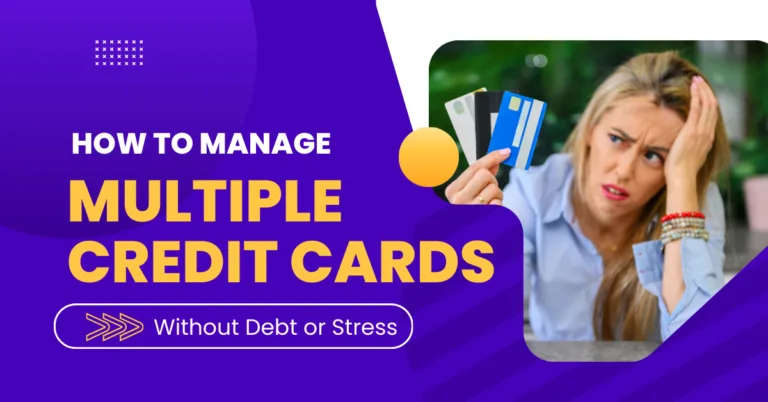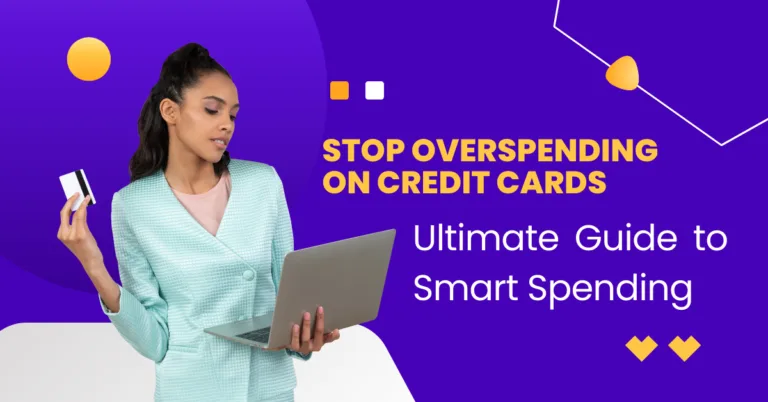Introduction
Hey fam! Let’s talk about something that might seem a little intimidating, but is super important for your financial health: your credit card statement. I know, it can look like a bunch of random numbers and confusing terms, but trust me, once you understand it, it’s actually a powerful tool for managing your money. It is a crucial step in understanding credit card statement, and we are here to help you with it.
You might be one of those people who just glance at their credit card statement, pay the minimum payment and then forget about it. But that approach can actually hurt you in the long run. In this post, we’re going to break down the mystery of credit card statements and show you how to use them like a pro. This will help you avoid falling for the common Credit Card Myths for Young Adult.
This is your complete guide to understanding credit card statement. We’ll explore the different sections, terms, and also tips on how to use all that information to take control of your finances. Let’s dive in!
Now that you have a little idea about why this is important, let’s talk about the basic concepts of it.
Understanding Credit Card Statement: The Basics
Okay, let’s start with the basics. What exactly is a credit card statement, and why is it so important? Think of it as a monthly report card for your credit card activity. You’ll need to know all the information to truly have a good understanding of your finances.
What is a Credit Card Statement?
A credit card statement is a monthly summary of all your transactions, and it also shows your outstanding balance, your credit limit, and other important details. It is a snapshot of your spending and credit card usage for a specific time period. It also includes payment due dates, interest charges and any other fees you may have incurred. You need to make it a habit to review your statement, because it has a lot of important information about your financial health.
You need to review your statement every month, as it shows how much you spent, and it also helps you identify any errors or unauthorized activity. So you should never ignore your credit card statement, you should always be looking at it. It is a crucial step in understanding credit card statement.
Paper Statements vs. Online Statements
You can receive your credit card statement either as a paper statement in the mail, or as an online statement, which is available on your credit card company’s website or app. While paper statements are also an option, online statements are more convenient, more secure, environmentally friendly, and easier to track.
Most people prefer online statements, as they are so easy to access, whenever you need it. Also, they provide a great way to organize your expenses. So if you have a choice, always opt for online statements. It is an important step to understanding credit card statement and having a better grasp of your overall financial situation.
Key Sections of a Credit Card Statement
Your credit card statement is made up of many different sections, and each section contains unique and valuable information. The most common sections of your credit card statement are: the account summary, transaction history, payment information, and other important notices. Understanding all of these sections will give you a clear understanding of your credit card use.
Understanding all the different parts of your credit card statement, is vital to managing your credit card and also to avoid getting trapped in the minimum payment trap. You will also be able to catch any unauthorized transactions, and stay on top of your finances. Understanding all of these sections will help you achieve the ultimate goal of understanding credit card statement.
Now that you have a general idea of the main sections, let’s dive a little deeper, and break down each of those main sections.
Okay, now that you know the basics of a credit card statement, let’s dive deeper and decode all the different sections. You might think they look confusing, but once you understand the different parts, it’s actually very easy. Let’s break it all down and get you familiar with all the sections of your credit card statement.
Diving Deep: Decoding Key Sections of Your Credit Card Statement
It might seem overwhelming at first, but understanding all the different sections of your credit card statement is actually very simple. Once you understand the key things in each section, it will be a piece of cake to understand your statement.
Account Summary
The “account summary” section provides an overview of your credit card account for the billing cycle. This includes your previous balance, which is the amount you owed at the beginning of the billing cycle, your new balance, which is your current outstanding balance, your credit limit, which is the total amount you can borrow, and also your available credit, which is the amount you have available to spend.
It also includes your minimum payment due, and that’s what credit card companies want you to pay, when you should actually be paying your full balance. Understanding this section is a great way to know the status of your credit card account. It is an essential part of understanding credit card statement.
Understanding Transaction History
The “transaction history” section is a list of all your purchases, payments, and credits, during the billing cycle. For each transaction, you will be able to see the date, the name of the merchant, and the amount. It’s very important to review all of these transactions to make sure all of them are legit, and to catch any unauthorized transactions.
Going through your transaction history will give you a clearer idea of how you have been using your credit card, and where your money is going. It is an important step in understanding credit card statement. It is also a great way to identify your spending patterns.
Payment Information
The “payment information” section includes your payment due date, the minimum payment due, and also instructions on how to make a payment. It is important to note that your payment due date is the date by which you need to make your payment to avoid late fees and also interest charges.
As you know, you should always try to pay your full balance by the due date, but if that’s not possible, at least try to pay the minimum payment by the due date to avoid late fees. Understanding this section is vital for responsible credit card usage. It is a key step in understanding credit card statement.
Interest Charges
The “interest charges” section includes details of the interest you have accumulated in that billing cycle. You will see how much interest you are being charged each month, if you are carrying a balance on your credit card. If you are paying your full balance each month, then your interest charges will be zero. So always try to pay your full balance to avoid interest charges.
This section will help you see how much money you are wasting on interest charges. And this knowledge will help you understand the importance of not carrying a balance on your credit card. Understanding this section will help you grasp the importance of understanding the minimum payment trap. Understanding the importance of interest charges is very vital for understanding credit card statement.
Now that you understand all the main sections of the statement, let’s explore all the important terms you will encounter, when you review your credit card statement.
Okay, now that we’ve covered all the sections of your credit card statement, let’s dive into the key credit card terms that you need to know. These terms are vital for responsible credit management, and avoiding debt. Let’s break it all down.
Key Credit Card Terms You Need to Know (And Where to Find Them)
Understanding the key terms related to your credit card is critical for understanding your credit card statement and for managing your finances responsibly. Let’s explore those important terms, that you will see on your credit card statement.
Understanding APR (Annual Percentage Rate)
The APR or Annual Percentage Rate is the interest rate you are charged on your outstanding balance. It is typically expressed as a percentage, and you will see this on your statement. A higher APR means higher interest charges, and you will end up paying more money in the long run, so always try to avoid carrying a balance on your credit card.
It is very important to pay attention to the APR, and you can always compare the APR of different credit cards before applying for one. Understanding APR is very important, and you need to have a clear understanding of what it means. This is an important step in understanding credit card statement.
Payment Due Date and Grace Period
The payment due date is the date by which you need to make a payment to avoid late fees. The grace period is the time between the end of your billing cycle and the payment due date, and if you pay your full balance during that period, you will not be charged interest.
So, you need to be aware of both the payment due date and also the grace period. By understanding these key terms you will always be able to avoid paying unnecessary late fees and interest charges. It is a crucial step in understanding credit card statement.
Credit Limit and Available Credit
Your credit limit is the maximum amount you can borrow using your credit card, and your available credit is the amount you have available to spend at any given time. You should always keep track of your credit limit and available credit, to make sure you are not overspending and to avoid any fees.
You should always try to stay well below your credit limit, to maintain a good credit score. Credit utilization is a big factor in determining your credit score, so always keep your available credit high. Understanding the difference between credit limit and available credit is an important part of understanding credit card statement.
Understanding Fees and Charges
There are many types of fees and charges that you should be aware of, such as late payment fees, over-limit fees, balance transfer fees, cash advance fees, and others. You should try to avoid all these fees by managing your finances responsibly.
It is always better to read the fine print of your credit card terms and conditions, so you know what kinds of fees your card has. It is also better to avoid credit cards with too many fees. Understanding different fees and charges is very important for understanding credit card statement.
Now that you have an understanding of all the basic terms, let’s discuss some tips on how to use your credit card statement to your advantage.
Alright, so now that you’ve got the hang of reading your credit card statement, let’s talk about some actionable strategies to use that information to manage your finances effectively. It’s all about taking the knowledge and using it to make better financial choices.
Practical Tips for Managing Your Credit Card with Your Statement
Your credit card statement is not just a bill, it is a tool to manage your finances. Here are some practical steps that you can use to make the most of it. Let’s dive in!
Review Your Statement Every Month
The first step to managing your credit card is to review your credit card statement every month. Do not ignore it! Make it a habit to look at it, as soon as you get it. This will make you more aware of your spending habits, and help you identify any unauthorized transactions or errors. It is one of the best financial habits that you can develop.
You should always make it a recurring event to review your statement every month. So be consistent and keep tracking your financial progress. It is one of the most important steps in understanding credit card statement and also managing your overall finances.
Check for Errors and Unauthorized Charges
Always double-check all your transactions for accuracy, and report any fraudulent activity immediately. Make sure that the charges match the purchases that you have made. If there are any unauthorized charges or errors, you can always report them to your credit card company, and they will take care of it. You should always be proactive in protecting your financial information.
It is also vital to check the fine print and make sure you are not being charged any hidden fees. Checking for errors and unauthorized charges is an essential part of understanding credit card statement.
Use Your Statement to Track Your Spending
Your credit card statement can be a great way to track your spending habits. You can see where your money is going, what you are spending on, and you can identify areas where you can cut back. You can use your statement, along with a budget to better manage your finances. It can be a great way to understand your spending pattern.
By using your credit card statement as a tool to track your spending, you can be more aware of your habits and improve your budgeting skills. Using your statement to track your spending, will ultimately help you take control of your finances and help you avoid the minimum payment trap.
Avoid the Minimum Payment Trap
As you already know, you should always try to pay your full balance every month, to avoid all the interest charges. When you understand your credit card statement, you are also more likely to avoid falling into the minimum payment trap. So always remember that paying the full balance is the best way to be financially free.
By understanding credit card statement, you will become more aware of your spending, and you will also be less likely to fall for the minimum payment trap. So always be aware of your credit card terms and keep track of your statements every month.
We’ve covered so much information today, and now it’s time to wrap it all up.
Okay, fam, we’ve reached the end, and I hope that you have a much better understanding of your credit card statement. It might have seemed a little scary at first, but with the knowledge that you gained today, you are now much more empowered to take charge of your financial journey.
Conclusion: Take Control of Your Finances by Understanding Your Credit Card Statement
Let’s recap: Your credit card statement is a powerful tool that provides you valuable information on how you are using your credit card. It helps you understand your spending habits, and it also helps you avoid unnecessary fees and interest charges. It is very important to make it a habit to review your statement every month, to take control of your finances.
Remember to review all the sections of your credit card statement, track your expenses, pay your full balance on time, and you will be well on your way to a healthy financial future. By understanding all these key concepts, you will avoid getting trapped in the minimum payment trap.
Ready to take control of your finances and ditch all the confusing stuff on your credit card statements? Check out our free budgeting template to keep track of your spending!
Click here to learn more about credit cards, and avoid believing the common Credit Card Myths for Young Adult.
Share this post with a friend who needs help understanding their credit card statement.
